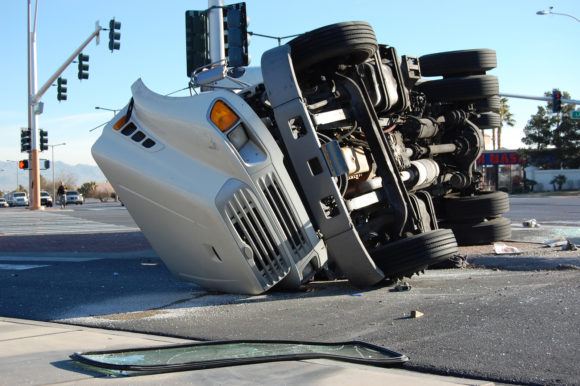The commercial auto line hasn’t returned an underwriting profit for eight years now. Growing claim severity is a big part of the problem. Advanced technology needs to be a part of the solution, according to a report released Tuesday by Fitch Ratings.
Fitch analyst Jim Auden said in a telephone interview that commercial auto insurers have fallen behind personal auto in using technology such as telematics to assess risk during the selection process. That is part of the reason that the sector’s average loss ratio has remained over 100% for eight years and probably will remain so for two more years, according to the special report.
“The results have been poor for this segment for some time,” Auden said. “The one area that can help with improvement is adapting technology.”
Auden said better technology will allow carriers to gather more information and better information during the application process. Claims-scoring models provide a tool to quickly identify incidents that can generate large losses or are likely to be litigated, the report says. More sophisticated analytics and artificial intelligence can identify and prevent fraudulent claims.
Fitch is the second ratings house this year to stress the importance of technology to insurer performance. In March, A.M. Best announced a plan to separately assess and score carriers’ innovation efforts, including the adaption of new technology, as a component in its financial strength ratings.
Fitch made its pitch for technology in a special report that examined the lingering poor loss ratios of the commercial auto line. In 2018, the segment’s statutory direct written premiums increased 13% and has been on an upward trend for years. Even so, the average combined ratio for commercial auto ticked up to 103.6 from 98.1 in 2011 and has been nearly that high or higher ever since. After peaking at 111.1 in 2017, the combined ratio for commercial auto dipped to 107.9 last year. That made commercial auto the weakest of all commercial lines market segments, Fitch said.
“Underwriting results are likely to improve further in 2019 but a return to a market combined ratio below 100% is likely out of reach in 2019 or 2020,” the Fitch report says.
Carriers have increased rates, but not enough to cover their losses. The average paid loss per closed claim increased 47% from 2009 to 2018, from an average paid loss of $9,200 to $13,500. Fitch said. The result: Fitch estimated that statutory commercial auto liability reserves may have been deficient by 3% to 5% at the end of 2018 — or roughly $1.1 billion to $1.8 billion.
“Claims severity issues, particularly on bodily injury claims, continue to nullify the effect of premium rate increases,” the report says.
To restore profits, insurers need to do a better job at risk selection, underwriting, loss control and claims management and operations, Fitch said. The ratings house said that advances in information technology and analytics offer underwriters opportunities to boost performance.
Insurers have growing access to third-party data, such as record kept by state motor vehicle departments. Recent requirements for electronic logging devices in commercial trucking implemented by the Federal Motor Carrier Safety Administration offer a source of “abundant information,” the report says.
Telematics data can help insurers segment risks and establish premium rates. The information can also improve driver training and risk management. The data could also be useful to policyholders for tracking maintenance needs, Fitch said.
Earning statements by the top 15 writers of commercial auto insurance show the need for improvement. Only four of those carriers reported an underwriting profit from the segment in the past five years: Progressive Corp., Chubb, Berkshire Hathaway and Old Republic International Corp.
American International Group performed notably worse than its peers, with an average combined ratio of 133%. Fitch said AIG has reduced its exposure in the segment, thereby making it the only carrier among the top 15 to experience a reduction in commercial auto premiums.
Other top carriers that performed poorly: State Farm Mutual Group, with a combine loss ratio of 124 percent; Zurich American Insurance Group at 122 percent; Liberty Mutual at 120 percent and Amtrust at 120 percent.
“Underwriters’ performance on an account basis may differ considerably from the commercial auto line in isolation,” the report says. “Looking at segment results can reveal how much commercial auto is dragging down other positive results in some instances.”
The Fitch report is available here.
Was this article valuable?
Here are more articles you may enjoy.


 Dog-Related Injury Claim Payouts Hit $1.12B in 2023, Report Shows
Dog-Related Injury Claim Payouts Hit $1.12B in 2023, Report Shows  California Sees Two More Property Insurers Withdraw From Market
California Sees Two More Property Insurers Withdraw From Market  California Chiropractor Sentenced to 54 Years for $150M Workers’ Comp Scheme
California Chiropractor Sentenced to 54 Years for $150M Workers’ Comp Scheme  Poll: Consumers OK with AI in P/C Insurance, but Not So Much for Claims and Underwriting
Poll: Consumers OK with AI in P/C Insurance, but Not So Much for Claims and Underwriting 